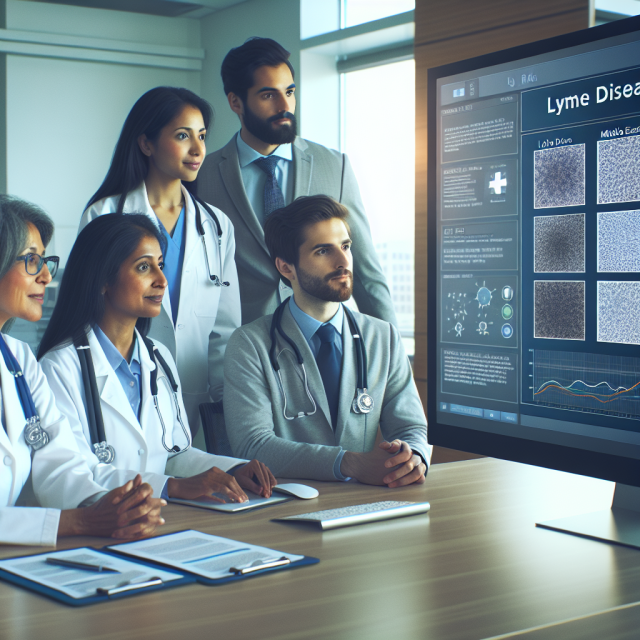
Introduction:
Lyme disease, caused by a tick bite, can leave you battling fatigue, joint pain, and brain fog for months—or even years. Early treatment is critical, but what happens when symptoms persist? Many patients feel lost, unsure if antibiotics are enough. Are there alternative options? Yes! Understanding your Lyme disease treatment options—from antibiotics to holistic therapies—can empower you to take control of your health.
Let’s explore both conventional and natural approaches to Lyme disease, so you can choose the best path toward healing.
Table of Contents:
What is Lyme Disease?
Lyme disease is a bacterial infection caused by Borrelia burgdorferi, transmitted through the bite of an infected black-legged tick. It’s often called “The Great Imitator” because its symptoms mimic conditions like fibromyalgia and chronic fatigue syndrome.
- Early Symptoms: Fever, chills, headache, muscle aches, and the classic bull’s-eye rash.
- Later Symptoms: Joint pain, heart palpitations, nerve pain, and brain fog.
Without proper treatment, Lyme disease can linger for years. That’s why finding the right Lyme disease treatment is essential.
Learn more about Lyme disease from HealingWell
Conventional Antibiotic Treatments
Antibiotics are the frontline treatment for Lyme disease. Starting them early can prevent complications. Here’s what to expect:
-
Oral Antibiotics:
- Doxycycline: The most common treatment, especially for adults and older children.
- Amoxicillin: Preferred for younger children and pregnant women.
- Cefuroxime (Ceftin): An alternative for those allergic to penicillin.
-
Intravenous (IV) Antibiotics:
- For severe cases, such as Lyme that affects the heart (Lyme carditis) or nervous system.
- Rocephin (Ceftriaxone): Commonly prescribed for neurological Lyme disease.
But what if symptoms persist after treatment? Many patients experience Post-Treatment Lyme Disease Syndrome (PTLDS), leading them to explore holistic therapies.
Holistic and Natural Therapies
When antibiotics aren’t enough, holistic approaches can support recovery and reduce symptoms. Here are some options:
-
Herbal Protocols:
- Buhner Protocol: Focuses on herbs like Japanese knotweed, cat’s claw, and Andrographis to fight bacteria and reduce inflammation.
- Cowden Protocol: Uses tinctures such as banderol and samento to support immune function.
-
Ozone Therapy: Increases oxygen levels in the body to combat bacterial infections.
-
Hyperbaric Oxygen Therapy (HBOT): High-pressure oxygen chambers may help kill lingering bacteria and improve neurological symptoms.
-
Acupuncture and Massage: Relieve joint pain and promote relaxation.
These therapies can complement conventional Lyme disease treatment, helping patients manage chronic symptoms and regain their quality of life.
Join the HealingWell Lyme Disease Community
Managing Chronic Lyme Disease Symptoms
Chronic Lyme disease, or PTLDS, can linger for months or years. Managing symptoms requires a comprehensive approach:
-
Pain Management:
- Over-the-counter medications like ibuprofen or acetaminophen.
- Low-dose naltrexone (LDN) for reducing chronic pain.
-
Cognitive Support:
- Supplements like omega-3 fatty acids for brain health.
- Cognitive-behavioral therapy (CBT) to manage brain fog and anxiety.
-
Immune Support:
- Vitamin D and probiotics to rebuild the immune system.
- Glutathione: An antioxidant that supports detoxification.
Managing Lyme disease is like putting together a puzzle—each piece helps your body heal.
Lifestyle Changes to Support Recovery
Healing from Lyme disease isn’t just about medication. Lifestyle changes can make a significant difference:
- Rest and Sleep: Your body heals while you sleep. Aim for 7-9 hours of quality rest.
- Anti-Inflammatory Diet: Focus on fresh vegetables, berries, lean protein, and healthy fats. Avoid sugar and processed foods.
- Hydration: Drink plenty of water to help your body flush out toxins.
- Stress Management: Practice meditation, yoga, or deep breathing to calm your nervous system.
- Exercise: Gentle activities like walking or swimming can reduce stiffness without overexerting your body.
A strong body is better equipped to fight Lyme disease.
When to Seek Help for Lyme Disease
Don’t wait if you notice symptoms after a tick bite. Early treatment prevents complications. Contact a doctor if you experience:
- A bull’s-eye rash or unexplained rash
- Flu-like symptoms after spending time outdoors
- Nerve pain or numbness
- Joint swelling, especially in the knees
For chronic symptoms, consider consulting a Lyme-literate medical doctor (LLMD) who specializes in complex cases.
Find support in HealingWell’s Lyme Disease Community
Conclusion:
Lyme disease is complex, but there are many paths to healing. From powerful antibiotics to supportive holistic therapies, a combination approach can help you reclaim your life. Remember, every person’s journey is different. Whether you choose antibiotics, herbal protocols, or lifestyle changes, the key is persistence and patience. You are not alone—communities like HealingWell are here to support you on your road to recovery.
FAQs on Lyme Disease Treatment:
1. What is the best Lyme disease treatment?
The best treatment is typically a combination of antibiotics like doxycycline for early Lyme disease and holistic therapies for chronic symptoms.
2. How long should I take antibiotics for Lyme disease?
For early Lyme, a 10-21 day course of antibiotics is standard. Chronic cases may require longer or repeated courses under a doctor’s supervision.
3. Can Lyme disease be cured completely?
Early detection and treatment can lead to a full recovery. However, some patients experience lingering symptoms known as Post-Treatment Lyme Disease Syndrome (PTLDS).
4. Are there natural treatments for Lyme disease?
Yes, protocols like the Buhner or Cowden Protocols use herbs to support the immune system and reduce symptoms. Hyperbaric oxygen and acupuncture can also help.
5. Should I see a specialist for Lyme disease treatment?
Yes. A Lyme-literate medical doctor (LLMD) is recommended for chronic cases or if symptoms persist after standard antibiotic treatment.
This content is not medical advice. For any health issues, always consult a healthcare professional. In an emergency, call 911 or your local emergency services.




